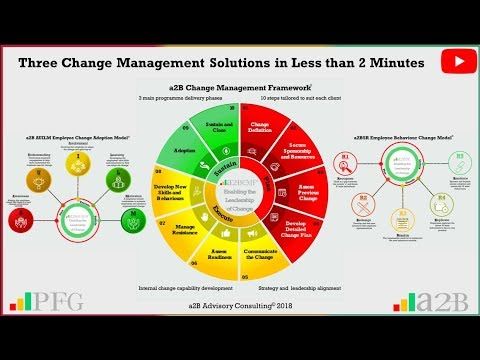Change is inevitable in today’s fast-paced and dynamic business environment. Companies must constantly adapt to remain competitive and drive growth. However, managing change effectively is a complex and challenging task. Organizations that fail to do so risk employee resistance, low morale, and even project failure. This is where change management solutions come into play.
Change management refers to the structured approach of preparing and supporting individuals, teams, and organizations in transitioning from their current state to a desired future state. It involves understanding the impact of change, planning for it, and implementing strategies to ensure successful adoption.
HTML markup for creating a header is as follows:
<header>
<h2>The Importance of Change Management</h2>
</header>
The Process of Change Management
Change management solutions typically follow a well-defined process that includes several key stages:
Assessment and Planning: This involves understanding the need for change, identifying potential risks and challenges, and creating a comprehensive change management plan.
Communication and Engagement: Clear and consistent communication is crucial to gain buy-in from stakeholders and ensure everyone is informed about the upcoming changes.
Training and Education: Employees need to be equipped with the necessary knowledge and skills to successfully adapt to the new processes or systems.
Implementation and Execution: This stage involves putting the change into action, monitoring progress, and addressing any issues or resistance that may arise.
Monitoring and Evaluation: After the change has been implemented, it is essential to assess its effectiveness, gather feedback, and make necessary adjustments if required.
The above HTML markup can be used to structure the points in an ordered list:
<ol>
<li>Assessment and Planning: This involves understanding the need for change, identifying potential risks and challenges, and creating a comprehensive change management plan.</li>
<li>Communication and Engagement: Clear and consistent communication is crucial to gain buy-in from stakeholders and ensure everyone is informed about the upcoming changes.</li>
<li>Training and Education: Employees need to be equipped with the necessary knowledge and skills to successfully adapt to the new processes or systems.</li>
<li>Implementation and Execution: This stage involves putting the change into action, monitoring progress, and addressing any issues or resistance that may arise.</li>
<li>Monitoring and Evaluation: After the change has been implemented, it is essential to assess its effectiveness, gather feedback, and make necessary adjustments if required.</li>
</ol>
The Benefits of Change Management Solutions
Implementing effective change management solutions offers numerous benefits to organizations, including:
Minimizing resistance to change: By involving employees in the change process and addressing their concerns, change management solutions reduce resistance and enhance acceptance.
Increasing employee engagement: Well-executed change management fosters trust, transparency, and collaboration, resulting in higher employee engagement levels.
Improving project success rates: Organizations that invest in change management are more likely to see their projects achieve the desired outcomes and objectives.
Enhancing organizational agility: Change management helps organizations become more adaptable and agile in responding to market dynamics and technological advancements.
Boosting employee morale: Employees who feel supported and involved during times of change experience higher job satisfaction and morale.
The above HTML markup can be utilized to structure the benefits as an unordered list:
<ul>
<li>Minimizing resistance to change: By involving employees in the change process and addressing their concerns, change management solutions reduce resistance and enhance acceptance.</li>
<li>Increasing employee engagement: Well-executed change management fosters trust, transparency, and collaboration, resulting in higher employee engagement levels.</li>
<li>Improving project success rates: Organizations that invest in change management are more likely to see their projects achieve the desired outcomes and objectives.</li>
<li>Enhancing organizational agility: Change management helps organizations become more adaptable and agile in responding to market dynamics and technological advancements.</li>
<li>Boosting employee morale: Employees who feel supported and involved during times of change experience higher job satisfaction and morale.</li>
</ul>
The Role of Technology in Change Management Solutions
In today’s digital age, technology plays a critical role in facilitating and supporting change management initiatives. Various software tools and platforms are available to streamline communication, training, monitoring, and evaluation processes.
HTML markup can be utilized to emphasize and highlight key phrases:
<p>In today’s digital age, technology plays a <strong>critical role</strong> in facilitating and supporting change management initiatives. Various software tools and platforms are available to streamline communication, training, monitoring, and evaluation processes.</p>
Conclusion
Change is inevitable for organizations striving for growth and success. However, managing change effectively requires careful planning, clear communication, and the use of change management solutions. By investing in change management, organizations can minimize resistance, foster employee engagement, increase project success rates, enhance agility, and boost overall morale. Embracing technology in change management efforts can further streamline processes and improve outcomes. With the right strategies and tools in place, organizations can navigate transitions successfully and thrive in today’s ever-evolving business landscape.
HTML markup for the footer can be as simple as:
<footer>
<p>Written by [Your Name].</p>
</footer>

